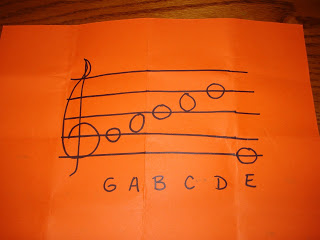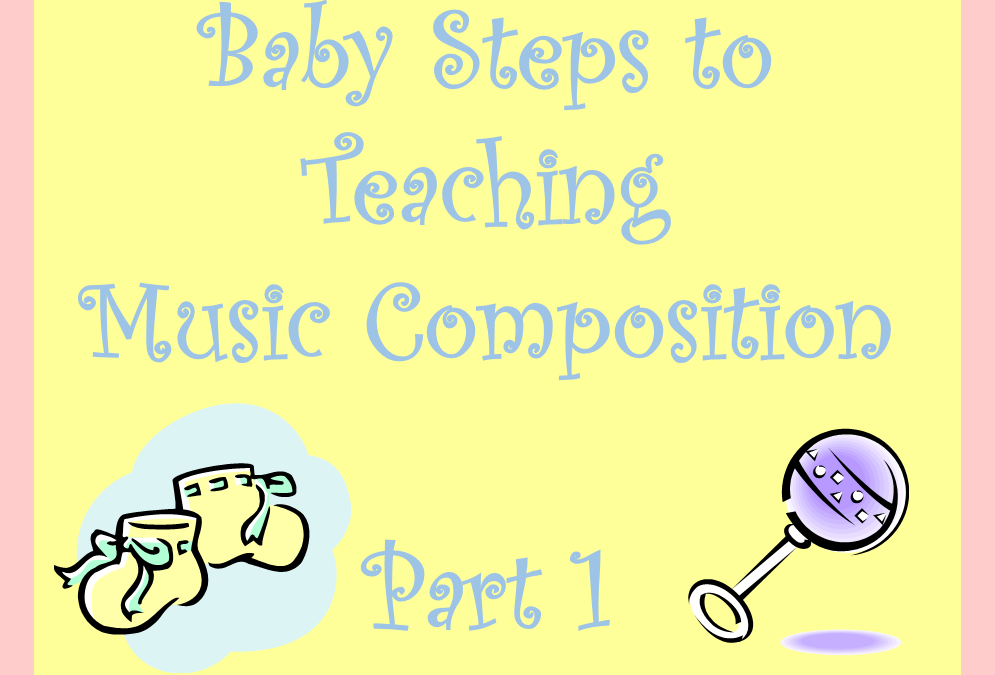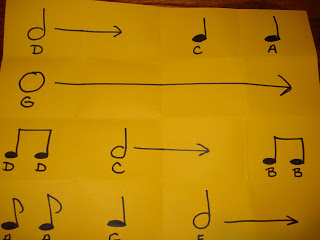Well today, I sort of had an epiphany. Here it is……. Are you ready? You’ve got to prime the pump!
All of the awesome teachers reading this blog with go….”Yep….. we know…. that is not news! Everyone knows that.” Well, I’m telling you that I knew it, and I’ve lived it in so many areas of my teaching, but I just didn’t really get it where music composition was concerned.
Today was the first day of teaching in a new rotation, so I was THRILLED to be starting off a new lesson on a Monday, so I planned and prepared and prepared and planned. Then when my 5th graders walked in my brain had one of those teaching “SHAZZAAAM!” moments and I realized that I could do teach a much more interesting lesson that would still hit all of my objectives if I just went with my moment of inspiration.
Here is what I did as I flew by the seat of my pants into a lesson I can’t wait to teach again tomorrow!
1. I first had my students fold a regular piece of copy paper into 16 squares. I have them fold their paper in half 4 times.
2. Then I had my students students create this chart as a review for rhythm duration and relationships. Each square is equal to one beat. Since this was 5th grade and I knew I wanted to compose with them, I really pushed them to work quickly. I explained that this chart was only going to be for their reference, so they should be accurate, but that they didn’t have to copy verbatim. I had other notes that this student didn’t need.
 |
| THIS was my epiphany about priming the pump…. I took the time to remind them of what they already know |
In the old days, I might have stopped there and moved onto something else…. OR I might have turned it into a reading lesson…… Instead….
 |
| This class feels comfortable playing GABCD and E….. I realized that when I compose music, I use words that I KNOW! |
4. I had them quickly fold a 2nd piece of paper just like the first.
 |
| It was fun to see them figure out that eighth notes were the same regardless of whether or not they had a bar or a flag. |
6. Once we got to this next step they go really excited. While they were working, I had quickly passed out their recorders so that they would have them on hand. They assigned each rhythm a pitch……Almost all of them got to the point where they were trying to play what they had written.
7. Next time they come to class they will have a chance to edit their work using their recorder. Because we were beginning to run short on time by the time they were assigning pitch there wasn’t time for very much exploration. So next time they come to music, they can edit their work, share it with other students ad write it on the staff. MAYBE we’ll have time to add words.
I’m looking forward to seeing how well this works with my class tomorrow. I have high hopes! As I said, I still feel like a novice at teaching music composition, but I felt much more successful having taken the time to remind my students of what they already know. Creating something original wasn’t nearly such a leap when we remembered all that we knew before. They were SUPER proud of themselves!
What fun!
The 16 square rhythm chart is a way to review rhythm that I borrowed from my colleague Pablo Ocañas.






I too struggle to get this concept understood – baby steps, indeed.
This is the hardest thing for me to teach as well. I don't know why I haven't thought of folding paper before–genius!
Fine post about music and really helpful info for
musicians .Please write write more about songwriters wanted .I wanna read more similar post from yours .Please keep writing for music.